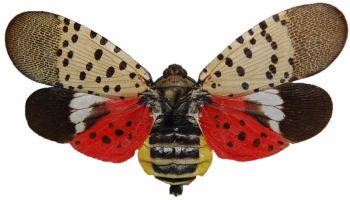Why Is Right of Way Clearing Important?

As tree care professionals, one big aspect of our job is tree removal, and one of the tree removal services we provide frequently is municipal or commercial right of way clearing. Some might think that right of way clearing only refers to keeping roadway borders maintained, but many other types are actually more common.
What is Right of Way Clearing?
Right-of-way clearing involves removing unwanted trees and brush that overgrow their set boundaries. This boundary could be horizontal, including trimming and pruning overgrown trees to clear a walk, roadway, or access point. Or the boundary could be vertical, such as when trees grow up into power lines or structures.
What are the Different Types of Clearing?
Stein has provided right-of-way clearing for businesses, municipalities, school systems, and residents. Some common requests are:
Roadways
Both public and private roads necessitate a cleared space on either side for safety. A clear right of way encourages drivers to pull their cars entirely off the road when needed, creating a safer distance between them and passing vehicles. Moreover, a cleared area acts as a buffer in case of a falling tree, and a professional tree care company can identify potential hazards before they threaten passing cars and people.
Bike Paths and Walking Trails
Many cities and townships provide bike paths and walking trails for the benefit of their residents, and when they do, they have a responsibility to be sure that the areas are safe for passage. Clearing includes removing brush and keeping trees trimmed back from the path.
Pipelines and Utilities
Whether installing new pipelines and utility lines or maintaining them, the areas around these features must be clear to allow necessary access. When repairs are urgent, technicians have no time to waste waiting for someone to clear a path.
Cable & Fiber Optics
When businesses or municipalities need to lay and bury new cables, the surrounding areas must be clear of trees that could impede the path. If right-of-way clearing is neglected, tree roots can grow into the area and damage cables.
Railroads
Right of way clearing helps prevent delays or even accidents around railroad tracks and crossings. In addition to keeping brush away from the tracks, trees must be trimmed so that their branches are prevented from striking the cars passing by.
Fences
Fences in neighborhood common areas, along roadways, and around parks or residences benefit aesthetically from keeping the surrounding areas clear. In addition, keeping trees clear of the area helps prevent them from falling on or damaging the fences. This type of breach prevention is even more critical in rural areas, where animals might be penned.
Surveys or Construction
One of the most common needs for right-of-way clearing is when new construction is planned. Surveyors can more easily manage cleared land, and of course, before any building can begin, the area has to be cleared of brush and trees.
Why Is Right of Way Clearing Important?
Many businesses depend on nearby infrastructure, such as power lines or pipelines, to keep their company and staff productive. Maintaining the integrity of this infrastructure is crucial. Arborists provide right-of-way clearing maintenance to ensure the infrastructure businesses and residents rely on is accessible and safe from potential tree damage. Here are four reasons why right-of-way clearing is a vital service.
1. Prevent Infrastructure Damage & Maintain Safety
One of the most important reasons for right-of-way clearing is to keep the surrounding people and infrastructure safe. Some examples of scenarios where a tree is interfering with property and making the area unsafe include:
- Branches that are too close to power lines
- Weak trees near the sides of roads
- Uncontrolled roots near an underground pipeline
In all these instances, a weakened tree can cause significant damage to people or property due to branches falling onto and cutting power lines or trees toppling over.

Types of Damage Right of Way Clearing Prevents
Some of the types of damage that trees too close to power lines can cause include the following:
Power outages. When a tree branch hits a power line, a short circuit can result and lead to a power outage. This can be a significant inconvenience for businesses and residents. A blackout can also be dangerous if people rely on electricity for life-support equipment.
Fires. A fire can start if a tree branch touches a power line and arcs. This is a serious hazard, as power lines carry high-voltage electricity that can cause fires to spread quickly.
Electric shock. Trees growing near power lines pose an electrical hazard to anyone in contact with them at ground level. Given the right conditions, even if the trees and power lines are not touching, electricity can arc from the power line to nearby trees. This situation is hazardous and can be fatal to anyone near the tree, such as the workers responsible for maintaining the power lines.
Property damage. If a tree falls on a power line, the debris can cause costly damage to homes, businesses, and vehicles.
In addition to these direct hazards, trees that interfere with power lines can create indirect risks in an otherwise reliable power system. For example, if a power outage occurs due to a tree, traffic signals or streetlights may stop working, leading to traffic accidents.
Keeping Animals Away from Infrastructure
Another issue is that overgrown vegetation areas attract snakes, rodents, and larger animals like deer. Near a roadway, these animals can be hazards to drivers. For businesses that receive a lot of foot traffic, animals can carry unwanted diseases or insects that can put clients, family members, or pets at risk. Taking preventive measures by clearing these areas of unwanted or unsafe vegetation can significantly reduce the risk of injury or damage to people and property.
2. Improved Accessibility
Right-of-way clearing helps protect infrastructure from obstacles that may interfere with or obstruct travel. For example, hikers along a walking trail must carefully navigate an area where tree branches are low and close to eye level. Another example would be trees blocking work crews and vehicles from getting to their pipelines or utilities. By clearing these critical areas of overgrown trees and branches, people can easily, safely, and quickly move to their destination, which is especially vital in commercial or industrial areas.
3. Aesthetic Visibility
Land clearing improves a property’s aesthetics and visibility. Customers find properties with much vegetation appealing. Still, brush and trees that grow in the wrong areas or appear poorly maintained can detract from the impression. Selectively clearing out weeds, brush, and trees creates more usable space for workers, making the space more appealing and welcoming to potential customers.
4. Practical Visibility
Clearing out select plants and trees makes patrolling, inspecting, and monitoring those areas or infrastructure components easier. Think of how difficult it would be to inspect power lines with many branches and leaves obscuring them. Keeping these areas clear is necessary for workers to do their jobs properly, and by taking a proactive approach, you are keeping your business productive and reducing the likelihood of potential issues.

Contact Stein Tree for Right of Way Clearing
If you want to keep your commercial property healthy and safe for visitors and employees, contact Stein Tree Service. Our ISA-certified arborists have hundreds of years of combined experience and knowledge of up-to-date safety standards and regulations. Stein has provided businesses and municipalities with right of way and maintenance services in Pennsylvania, Delaware, and Maryland. We work to ensure your trees are healthy and beautiful and maintain your business’s safety. Contact us today for more information on right of way clearing or our other services.


